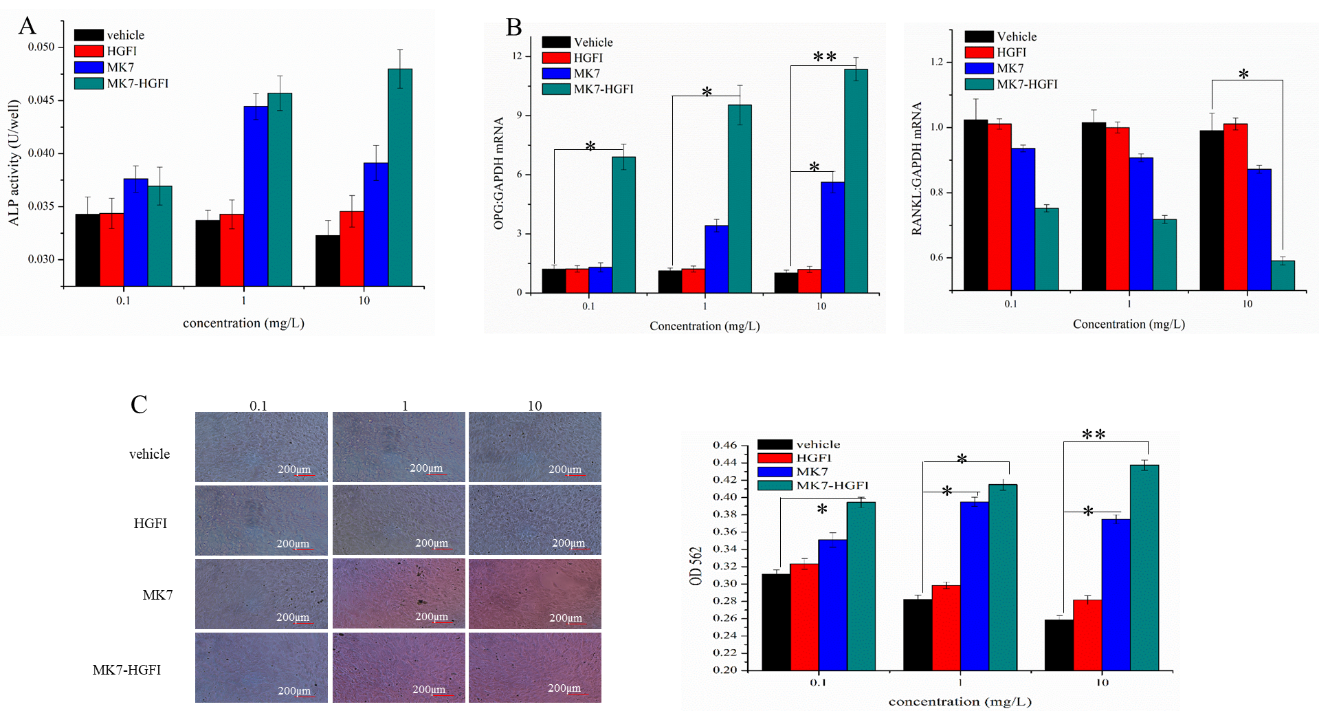Osteoporosis is a common debilitating bone disease, which is characterized by bone loss and degeneration of bone structure, primarily caused by an imbalance between bone formation by osteoblasts and bone resorption by osteoclasts. When bone resorption exceeds bone formation, it will lead to low bone density and increase the risk of fractures, leading to osteoporosis.
Recently, a research group led by Prof. Zhiming Zheng from the Institute of Intelligent Machines, Hefei Institutes of Physical Science (HFIPS) made progress in the study of vitamin K2 to improve bone health, introducing a new solution to treat osteoporosis.
As a coenzyme of glutamate γ-carboxylase, Vitamin K2 can carboxylate the glutamate residues of vitamin K-dependent protein-osteocalcin and matrix γ-carboxylated glutamate residue proteins. The osteocalcin would promote bone formation. However, fat-soluble vitamin K2 is difficult to reach its peak concentration in the body. Besides, there is a risk of local overdose as it’s stored in the liver.
"Our work is to improve the bioavailability of vitamin K2,” said TANG Hengfang, a student who joined the research, “ this time, we used amphiphilic carrier protein to modified vitamin K2 hydrophilically.”
The result was striking. They obtained spherical nanoparticles uniformly dispersed in the aqueous solution by optimizing the mixing molar ratio of carrier protein and vitamin K2 (MK7).
“We applied the vitamin K2 nanoparticles to MC3T3-E1 cells,” said TANG, “and found that the expressions of osteoblastic markers were significantly upregulated, including alkaline phosphatase (ALP), osteocalcin and OPG/RANKL.” The formation of extracellular mineralized nodules was also significantly strengthened, indicating that the vitamin K2 nanoparticles could effectively promote osteoblastic differentiation.
The research results opened new possibilities for osteoporosis with vitamin K2 as alternative.
This research has been supported by the National Key R&D Program of China, the Key research and development program of Anhui Province and other projects.
Link to the paper: A study of hydrophobins-modified menaquinone-7 on osteoblastic cells differentiation

Fig. 1 Schematic diagram of carrier protein hydrophilic modification of vitamin K2 and promotion of osteoblast differentiation (Image by TANG Hengfang)

Figure 2 Detection of markers related to osteoblast differentiation (Image by TANG Hengfang)
Contact:
ZHAO Weiwei
Hefei Institutes of Physical Science (http://english.hf.cas.cn/)
Email: annyzhao@ipp.ac.cn
 Tel: +86-551-65591206
Tel: +86-551-65591206
 Fax: +86-551-65591270
Fax: +86-551-65591270
 Emai: zhous@hfcas.ac.cn
Emai: zhous@hfcas.ac.cn
 350 Shushanhu Road
350 Shushanhu Road